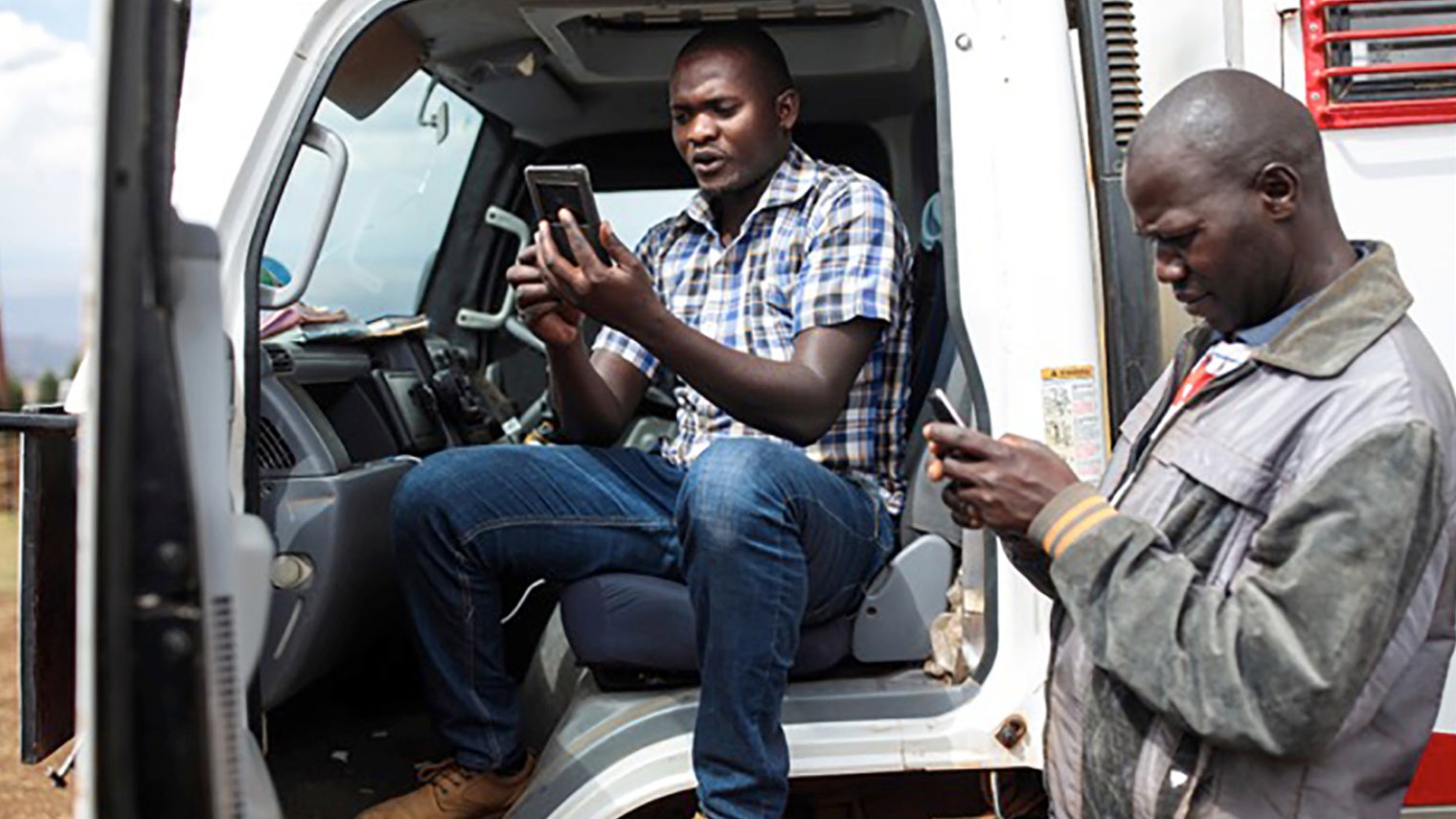From the barley fields of Uganda to cassava farms in Zambia, blockchain – the technology behind cryptocurrencies such as bitcoin – is helping make supply chain transparency to agriculture all over the world.
Blockchain in agriculture is a reaction to our growing demand for ethical products that have been sourced sustainably and from farmers who have been paid a fair market price.
But agricultural supply chains are complicated beasts, often operating in their own small silos. This can obscure supply chain transparency and thwart access to sound, reliable information, leaving smallholders marginalised and unable to get the resources they need.
Lack of supply chain transparency leads to underpaid producers
“The global food value chain is a complex network extending from farmers to processors, to transport companies, to distribution centres, to grocery stores,” says Eric Somitsch, senior director of solutions for consumer products and agribusiness, at software provider SAP.
“Before food reaches our plates, it has often travelled halfway around the world and been touched by many intermediaries. Therefore, providing supply chain transparency from farm to consumer is difficult to achieve and without transparency it is hard to get people to trust the system; this is where blockchain can help.”
When AB InBev, the world’s largest brewer, started looking at its supply chain transparency in Africa, they began talking to local farmers. “We quickly realised they weren’t getting the prices that we thought they were,” says Katie Hoard, global director of agricultural innovation and sustainability. Corruption and too many middlemen were taking their toll on the money that farmers were actually banking.
To tackle the problem, AB InBev linked up with technology company BanQu to launch a simple mobile app based around blockchain, which offers farmers a secure, immutable platform that records their transactions.
Importantly, explains BanQu co-founder Ashish Gadnis, the system creates an economic identity and transaction history, making it easier for farmers to deal with banks and other financial institutions. “When the farmer says ‘I exist in the AB InBev supply chain’, they become bankable,” he says.
Currently, more than 20,000 barley and sorghum farmers in Uganda have been added to the platform, along with a further 2,000 cassava farmers in Zambia.

Nile Breweries Limited (AB InBev) farmers using the BanQu app
How blockchain is improving supply chain transparency
Blockchain brings very practical benefits too, adds Ms Hoard, who recently spoke to a farmer in Uganda whose paper receipt for barley sold, the only proof she had of the crops she produced, was destroyed in a torrential downpour. “With blockchain there is always an electronic receipt sitting on her cell phone,” says Ms Hoard.
But blockchain is only one piece of the puzzle, says Mr Gadnis, and other farmer-centric platforms have an important role to play in ensuring the long-term viability of supply chains.
Olam is one of the world’s largest agri-businesses, with supply chains covering a range of commodities from cashew to cotton. Last year the company launched AtSource, a non-blockchain technology which is also designed to improve supply chain transparency and farmers’ livelihoods, says Siddharth Satpute, programme director of Olam International’s digital task force.
It tracks the environmental and social impact of a product at each stage of its journey, helping Olam to provide its customers with the data they need to measure their own sustainability commitments.
“More data and insights means better targeted, and therefore more efficient, sustainability programmes,” says Mr Satpute. “In turn, this means faster change for farmers to improve livelihoods and better protection of natural resources, resulting in more resilient supply chains.”
Agriculture technology must exist within a wider framework
However, Chris Isaac, managing director of AgDevCo, offers a word of warning. “Mobile agtech is a powerful tool for reaching farmers but, unless it is part of a wider ecosystem, it is likely to disappoint,” he says.
AgDevCo is an impact investor, funded by the UK Department for International Development, working with small agri-businesses across Africa and helping them connect with smallholder farmers.
“There’s a lot of excitement about mobile agtech solutions, but they can’t help smallholder farmers in a vacuum,” he says. “You need the local processor or aggregator, who engages with farmers on the ground and acts as the link to international markets.”
In Mozambique, for example, AgDevCo works with Moz-Agri, a business which buys goats from thousands of farmers and is introducing a digital traceability system using electronic ear tags. Elsewhere, in Malawi, AgDevCo is helping Jacoma, a macadamia nut processor, to roll out a system to register hundreds of growers. They can then build a database to support traceability and supply chain transparency, help with training and inputs distribution, and better monitor farmers’ yields and incomes.
Mr Isaac concludes: “Digitisation gives a direct channel to the farmers that potentially cuts out some of the middle men. It allows you to get better information on where some of the stuff is coming from and that, potentially, allows you to pay better prices because you know that farmer is giving you a quality product. Long term, this is surely the direction things are heading for many commodities.”
Lack of supply chain transparency leads to underpaid producers

